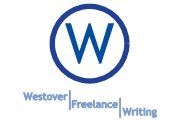Research First
At the very least, you’ll do some measure of research before you send off a query, even if it’s only to look up the address. While you’re at it, increase your opportunities to get published by finding out what the publication’s submission guidelines are, which editor to send your work to, and determine before hand whether a topic is appropriate for the publication.
What you’ll want to know:
Contact Info
Editor Name
Submission Guidelines
Study Market
Format
While there are as many format variations as there are writers, there are some key pieces of information that you need to have in your query.
Editor Name
Hook
Basic Info about the article
Author Bio
If you are missing any of these elements, your initial query to an editor is probably incomplete.
Because a query letter is essentially a business proposal, many writers suggest using a business letter format. Whether that format works best is up to the writer, but you absolutely must be business-like and professional. Make sure it’s easy to read, clearly organized and is complete.
Professionalism
When your query letter is being read, it’s often the only thing an editor has to go on regarding your writing skills, your dependability and your professionalism. If you’re not already fanatical about doing things right, now would be a good time to start.
Mistakes to Avoid
Here’s what not to do:
Include spelling errors, grammatical problems or sloppy language
Put in an unusual font/color/paper/etc
Include unimportant personal details
Get long winded to make your short query longer
Some Great Articles on Query Letter Writing:
How to Write a Query Letter - John Hewitt
The Stuff E-Mail Queries are Made Of - Mridu Khullar
From Thought to Query - Teri Pilcher
The 5 Paragraph Query Letter - Terri L. Main
Tips for Query Writing - Jessica Ramirez



No comments:
Post a Comment